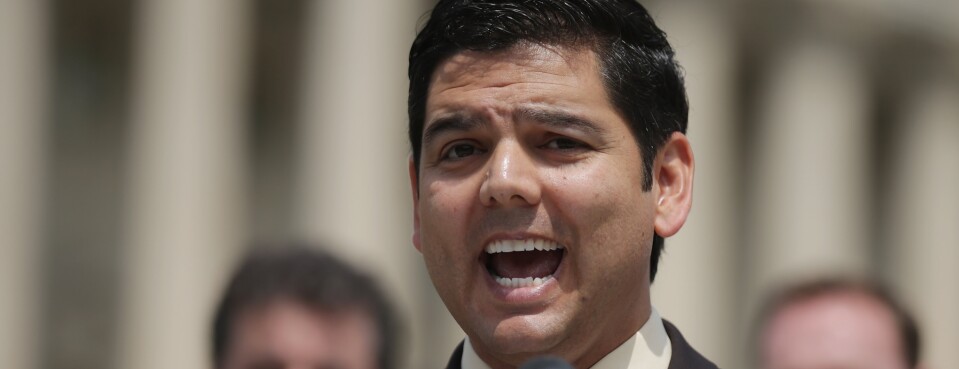
The doctors in the House want to revamp how Medicare pays physicians, potentially giving health-care providers a boost in pay in coming years.
Lawmakers with medical backgrounds say the time is right and they’re in key positions this Congress to end what’s become an annual frustration of averting billions of dollars in cuts to Medicare pay to doctors and hospitals. The annual cuts to the public health insurance program for the elderly and disabled are a side effect of the current pay structure and rules Congress set up to curb federal spending. But, those efforts will face headwinds by some Republicans more focused on cutting spending.
If successful, the effort would be a major win for health-care providers who treat Medicare patients by increasing physician pay and ending the threat of looming cuts. It could also address two problems that have long plagued Medicare: its payment system doesn’t keep pace with the broader economy, creating the potential for doctor shortages, and it’s a growing share of federal spending. What impact raising Medicare pay for doctors will have on spending is to be determined.
“Every year we’re going to have to find a way to stave off these statutory cuts,” said Rep. Larry Bucshon (R-Ind.), a cardiothoracic surgeon before joining Congress. “Nobody at either side of the aisle thinks this is a good idea.”
Those statutory cuts are built into current law, but have been regularly delayed or averted at least partially by Congress for more than a decade in response to pressure from doctors, said Joseph Antos, a senior fellow who studies health care policy at the American Enterprise Institute. For example, late last year Congress moved to halve scheduled cuts to physician payments, down to 2% compared with 4.5% originally set by Medicare. That cut grows to 3.5% in 2024.
But doctors’ groups aren’t publicly praising Congress for the help, Antos said.
“It’s always a negative-sum game politically; the physicians who are helped will say ‘Thank you, but you didn’t give us enough,’ and those that aren’t helped will complain,” he said.
Doctors’ groups have warned that letting the cuts take effect could lead to long-term shortages of doctors who serve Medicare patients, particularly in rural or other underserved areas.
Physician payments by Medicare, unlike those for hospitals, aren’t tied to inflation and aren’t projected to keep pace with the average rate of physician cost increases, according to the latest Medicare Trustees’ report, which looks at the overall financial state of the program. That means costs for running practices are rising faster than Medicare payments, creating a disincentive for doctors to participate in the program.
Bipartisan Push
While Medicare may not be paying some doctors enough to ensure seniors across the country have access to care, the program also faces insolvency by 2028, according to the Trustees’ report.
Antos said there’s little sign Congress will take on broader payment changes that would lower Medicare’s growth rate in the future. “No one has been talking seriously about that for quite some time,” he said.
But lawmakers in the so-called eight-member Doctors Caucus say they’re aiming to get those talks started in earnest this year.
The group asked for input last year and will send recommendations for legislation revamping Medicare’s pay system sometime this year, said Rep. Raul Ruiz (D-Calif.), an emergency room doctor. The group has yet to agree on details of these recommendations, he said.
They’re also pushing for key committees to hold hearings on the issue this Congress to build up support, Buschon said.
The gang holds key positions to get this done: Bucshon along with fellow former or current medical practitioners Reps. Michael Burgess (R-Texas), Mariannette Miller-Meeks (R-Iowa), Ruiz, and Kim Schrier (D-Wash.) sit on the Energy and Commerce Committee, which has jurisdiction over some Medicare programs. Rep. Brad Wenstrup (R-Ohio) is a member of the GOP Doctors Caucus who sits on the Ways and Means Committee.
Doctors groups for years have complained Medicare’s payment system hasn’t kept pace with inflation and other costs facing health-care providers. Groups such as the American Medical Association, the nation’s largest doctors’ lobby, have sought to boost what the public health insurance program pays health-care providers in rural and urban areas where there are doctor shortages.
Jack Resneck Jr., president of the American Medical Association, warned that physicians are increasingly operating on thin margins, particularly small and rural practices.
“Seniors and physicians deserve a stable Medicare payment system that ensures access for future generations,” he said in a statement.
Political Headwinds
A key congressional advisory panelrecommended Thursday lawmakers raise Medicare payments next year for physicians and hospitals serving large numbers of low-income beneficiaries.
For Republican lawmakers, at least, the push to bolster physician pay could be complicated by efforts within the GOP to cut government spending more broadly this year.
House Republican leaders have vowed not to support an increase in the nation’s debt limit unless it’s coupled with reductions to federal spending. Health care makes up a major part of that: Medicare represented about 12% of all government spending in fiscal 2022, roughly $755 billion, according to Treasury figures.
House Speaker Kevin McCarthy (R-Calif.) told reporters Jan. 12 that while he wants to overhaul spending, he doesn’t want to cut spending on Medicare. The issue has long been a third rail for Congress.
But avoiding cuts doesn’t mean lawmakers favor higher spending. Bucshon said he knows it’ll be difficult convincing his colleagues they should increase some Medicare spending, but he says it’s a worthwhile effort.
“We’re at a point where the reimbursement issues are hampering access to quality medical care,” he said.
Source link

